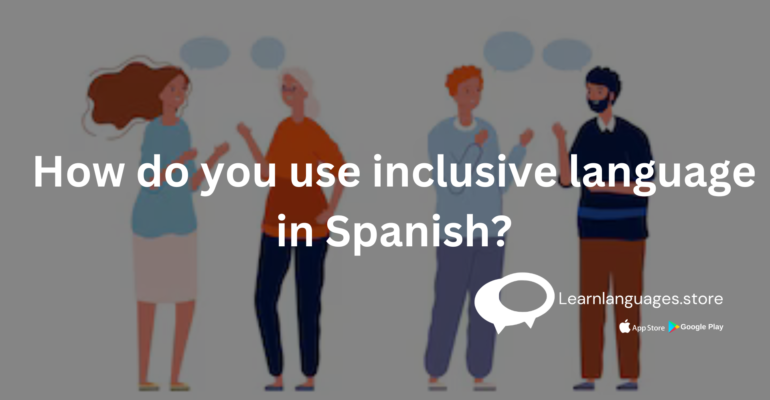How do you use inclusive language in Spanish?
How do you use inclusive language in Spanish?
Estimated reading time: 4 minutes
You’ve undoubtedly observed that nouns in Spanish have grammatical gender, and that the grammatical gender of a word corresponds to the gender of the person it refers to.
Does this make it difficult for Spanish to refer to people who are non-binary or of unclear gender in a gender inclusive manner? It turns out that speakers of Spanish are just as flexible with grammar as the language itself!
An summary of Spanish grammar gender
El libro and la cartera are examples of masculine and feminine objects in Spanish, respectively, and a word’s gender has no bearing on its meaning. Grammatical gender and personal gender are the same when referring to an individual. For instance, a chef who identifies as a woman is called a cocinera alta, while a chef who identifies as a male is called a cocinero alto. However, this might exclude a lot of people as there are only two options: masculine and feminine.
A single chef would be referred to as el cocinero and a group of chefs as los cocineros, even if the group includes non-men, because historically, Spanish has treated a person of undetermined gender or a group of persons of mixed genders as masculine!
But languages are dynamic, and Spanish, along with many others, is changing to suit its people in all aspects, including gender. While Spanish now has pronouns like elle and elles that are gender-neutral, some Spanish terms still indicate gender. This is what’s going on with Spanish grammar!
Spanish words acquire new usages
Several Spanish speakers use the plural forms of women and men separately to make their language more gender inclusive. Instead of saying “los cocineros,” they would say “las cocineras y los cocineros.” Although this approach has gained popularity, it still excludes non-binary people and identifies gender.
Using an alternative noun that does not define gender, such as cónyuge (instead of esposo/a for “husband” and “wife”) or estudiante (instead of alumno/a for “student”), allows you to refer to persons in ways that are independent of their gender.
Another way that speakers do this is by altering the noun’s ending to -e, as -e isn’t connected to either masculine or feminine grammatical gender. For instance, you may observe or hear individuals refer to el hijo (the son) or la hija (the daughter) as le hije. This new noun also receives a new form of the word “the,” le!
The same technique is used to refer to non-binary individuals or groups that encompass all genders; for instance, the -es ending might transform terms like “the students” or “the friends” into “les alumnes” or “les amigues.” The spelling of some words may change, as in the case of amigues (-e to -ue), while maintaining the same sound of “g.”
panish pronouns that are gender-neutral
There are other gender-neutral pronouns in Spanish than elle and elles! Additionally, there are nosotres in Spanish for “we” and vosotres for “you all.” For instance, all genders and identities are included in the line Nosotres preferimos paella con gambas (We favor paella with shrimp).
Spanish speakers may substitute the indirect object pronouns le and les for the direct object pronouns lo and la since they are gender-neutral. For instance, Le llamamos a las ocho (We call them/him/her/you [formal] at 8 o’clock) is an example of how to use les and les. In fact, le and les are already commonly used in several Spanish dialects where lo and la were formerly the sole alternatives!
Adjectives in Spanish are also provided!
Adjectives are yet another category of words in Spanish that alter according on gender! The majority of Spanish adjectives have distinct male and feminine forms. For instance, the adjective “tall” has two forms: alto and alta.
For them, Spanish-speaking people also have an answer: The equivalent adjectives receive the endings -e (for single) or -es (for plural) when gender-neutral nouns and pronouns are used. For someone who is gender fluid or gender neutral, you may remark, Elle es alte. Elles son altes is a term used to describe a group of persons who identify as non-binary or mixed gender.
However, there are also plenty of Spanish adjectives, such as interesante (interesting) and capaz (competent), that don’t alter based on gender. Since they already don’t alter, they are particularly simple to employ with a gender-neutral noun or pronoun: Él es capaz (He is competent), Elle es capaz (They [one person] are capable), and Ella es capaz (She is capable).
Learn Languages Store
Vashi,
Email: services@learnlanguages.store









